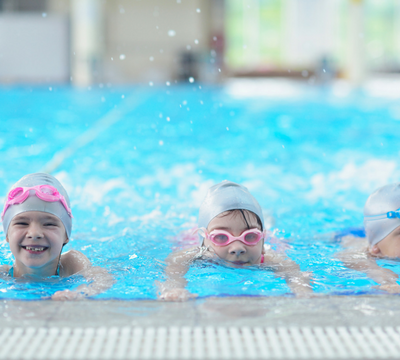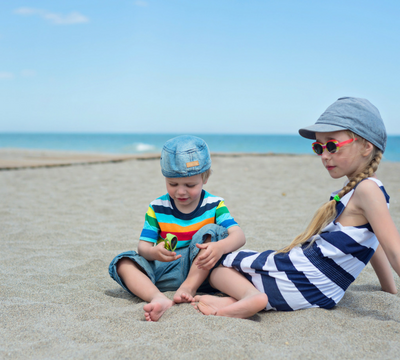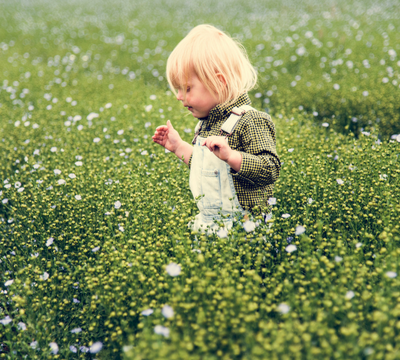Summertime is here! That means vacations, picnics, pool time, trips to the shore, adventures and more. To keep the fun on track, check out these 10 summer safety tips.
 1. Always supervise a child in the water.
1. Always supervise a child in the water.
A child can drown in even a small amount of water. According to the Centers for Disease Control and Prevention (CDC), drowning is one of the top causes of child death. For young children, the American Academy of Pediatrics (AAP) recommends an adult be at an arm’s length or less. For older children, an adult should be present and monitoring. If multiple children and adults are enjoying time in the water, it is a good idea to have a designated adult watcher to prevent any miscommunication among adults as to who is keeping an eye on the swimmers. For added security, pools — including inflatable or portable ones — should have gates, covers and even alarms. Also, consider becoming trained in CPR. It is a lifesaving skill that is accessible and widely available across the country. Some popular programs are the American Red Cross or the American Heart Association. You can contact your local community board or YMCA for more information on training in your area.
2. Teach your child to swim.
Lessons are available for children starting under 1 year of age, although the AAP suggests a child may be best prepared to learn around age 4. It is important that lessons do not become a substitute for supervision. A child’s confidence in the water cannot account for other factors that may contribute to an accidental drowning such as entanglement, a fall, water conditions or the swimmer’s physical health and fitness level. That is why while swimming lessons are an important skill for children, an adult should always be present during swim time.
.png?width=400&name=Untitled%20design%20(77).png) 3. Insist on a life jacket in open bodies of water.
3. Insist on a life jacket in open bodies of water.
Personal floatation devices (PFDs) are a valuable tool for protecting swimmers from fatigue and keeping the head above water, especially for younger or weaker swimmers. Tides, currents and waves can happen quickly, as can a fall from a boat or dock. Life jackets can even be useful in pools. Water wings are popular, but can easily slip off. Be sure the PFD fits your child properly.
4. Seek medical attention after a near drowning.
A near drowning occurs when the body is cut off from oxygen for any period of time due to water. In children, it can happen immediately. A person who has experienced a near drowning may show signs such as:
- cold or bluish skin
- abdominal swelling
- chest pain
- cough
- shortness or lack of breath
- vomiting
Although rare, it is possible for drowning to occur after a child has left the water. Dry drowning happens when water reaches the airway and causes a spasm, which cuts off a child’s ability to breathe. This often occurs shortly after leaving the water. Secondary drowning may take longer to appear, up to 24 hours. This happens when water reaches the lungs and causes fluid build-up and swelling, which prevents the child’s body from fully processing oxygen. If your child has been swimming and experiences any of these symptoms, seek medical attention:
- Excessive coughing
- Difficulty breathing
- Drowsiness
- Forgetfulness
- Vomiting
5. Protect your child’s skin from the sun.
Everyone is at risk for sun damage regardless of age or skin tone. The sun is at its hottest from 10 a.m. to 4 p.m., and a burn can begin in less than 15 minutes. Shade is an easy way to keep a burn from happening. Longer clothing can also help prevent sun exposure, as well as a wide-brimmed hat. If your child is in the sun, apply sunscreen according to the age-specific instructions on the label. There are many products on the market to fit your lifestyle, including well-known brands and organic versions. SPF 15 or higher is recommended. Reapply every two hours, or more often if your child is sweating or swimming. Don’t forget the neck, ears and lips! Even on cloudy days, the sun can cause damage.

6. Remember the eyes need protection too.
Sunglasses are not only for adults. A child’s eyes are especially vulnerable to the sun’s damage, which can cause problems later in life. If you are around water, the sun reflects up even more into the eyes. Sunglasses do not have to be expensive to provide protection, but they should have 99 to 100 percent UVA and UVB protection.
7. Keep your child cool and hydrated.
Children have more trouble regulating their body temperature than adults, and they may not be as aware if they need a break. As the weather heats up, be cautious of activities in the sun lasting more than 15 minutes. Take a water break at least every 20 minutes. Move to a cooler area for any symptoms such as dizziness, lightheadedness or nausea. They could progress into heat exhaustion or heat stroke.
 8. Use caution and protective measures during playtime.
8. Use caution and protective measures during playtime.
The CDC reports about 200,000 annual playground-related injuries for children under age 14 that require emergency room treatment. Nearly half are severe fractures, internal injuries, concussions or worse. To help protect your child, inspect a playground first to see if it is well maintained. Supervise playtime to be sure your child is within his or her skill limits. You can also apply preventive measures at home. For sports and biking, follow safety guidelines for protective gear, including helmets.
9. Take steps to prevent food poisoning.
There are many types of foodborne illness, and 1 in 6 people annually will consume an affected food or beverage. Food poisoning can lead to vomiting and diarrhea, with rare cases resulting in death, yet it is generally an avoidable illness. This summer, as you are enjoying picnics and barbeques, remember the advice of the CDC.
- Clean: wash your hands, tools and surfaces before, during and after you prepare food.
- Separate: uncooked ingredients for a single meal may contaminate parts of your cooking surface, your tools or your hands. Be mindful through the entire cooking process and clean accordingly.
- Cook: know the proper temperatures for various proteins to ensure you are serving food that is safe to eat.
- Chill: refrigerate your foods appropriately to keep germs from forming, especially in the summer heat.
10. Stop the itch before it starts.
Plants and bugs? Yes, that would be summer.
The “poisonous” plants we think of often — poison ivy, oak and sumac — are generally not so much dangerous as annoying. If your skin is allergic to the oils in these plants, contact leaves a rash. Avoidance is the easiest way to stay itch free, but it’s a good idea to bring along simple first aid products, such as rubbing alcohol and hydrocortisone cream or antihistamines. For more severe rashes, you may need to see a physician. In addition to the plant life that causes rashes, be sure to know the plants in your area that are toxic when ingested, which would require immediate medical attention.
 For bug bites and stings, a general local reaction will often mean pain, swelling, itchiness and/or redness at the entry point, which will persist for a few hours or maybe a day. With a large local reaction, the symptoms may extend a bit beyond the bite or sting location and last for more than a week. Home first aid such as hydrocortisone can help alleviate the symptoms. In rare cases, a person will experience anaphylaxis, which is a life-threatening allergic reaction and is often in response to stings. This reaction would require immediate medical attention and lifelong diligence. To prevent bites and stings, long clothing is useful. Insect repellents are also an option, including conventional brands or natural options such as lemon eucalyptus oil. If your child is wearing sunscreen, it is recommended that you let the sunscreen dry and then apply repellent. Insect repellents should not be used on children younger than 2 months old; mosquito netting is a helpful alternative. Certain repellent products are not recommended for children under 3 years old. Consult with your physician before using a product and avoid spraying a child’s hands when applying, since little hands reach the eyes and mouth.
For bug bites and stings, a general local reaction will often mean pain, swelling, itchiness and/or redness at the entry point, which will persist for a few hours or maybe a day. With a large local reaction, the symptoms may extend a bit beyond the bite or sting location and last for more than a week. Home first aid such as hydrocortisone can help alleviate the symptoms. In rare cases, a person will experience anaphylaxis, which is a life-threatening allergic reaction and is often in response to stings. This reaction would require immediate medical attention and lifelong diligence. To prevent bites and stings, long clothing is useful. Insect repellents are also an option, including conventional brands or natural options such as lemon eucalyptus oil. If your child is wearing sunscreen, it is recommended that you let the sunscreen dry and then apply repellent. Insect repellents should not be used on children younger than 2 months old; mosquito netting is a helpful alternative. Certain repellent products are not recommended for children under 3 years old. Consult with your physician before using a product and avoid spraying a child’s hands when applying, since little hands reach the eyes and mouth.
Responding to an emergency
It’s always better to err on the side of caution when it comes to your child’s health. Be sure to ask your pediatrician how he or she handles after-hour calls and what to do in case of an emergency. It’s also helpful to know where your local urgent care center and emergency room are located. For advice on when to call the doctor, when to go to a clinic or when to head directly to the ER, check out this guide from the U.S. National Library of Medicine. How to respond?
This article was powered by Pediatrix Medical Group, a MEDNAX company. Pediatrix Medical Group is the nation’s leading provider of maternal-fetal, newborn and pediatric subspecialty care and related services.

